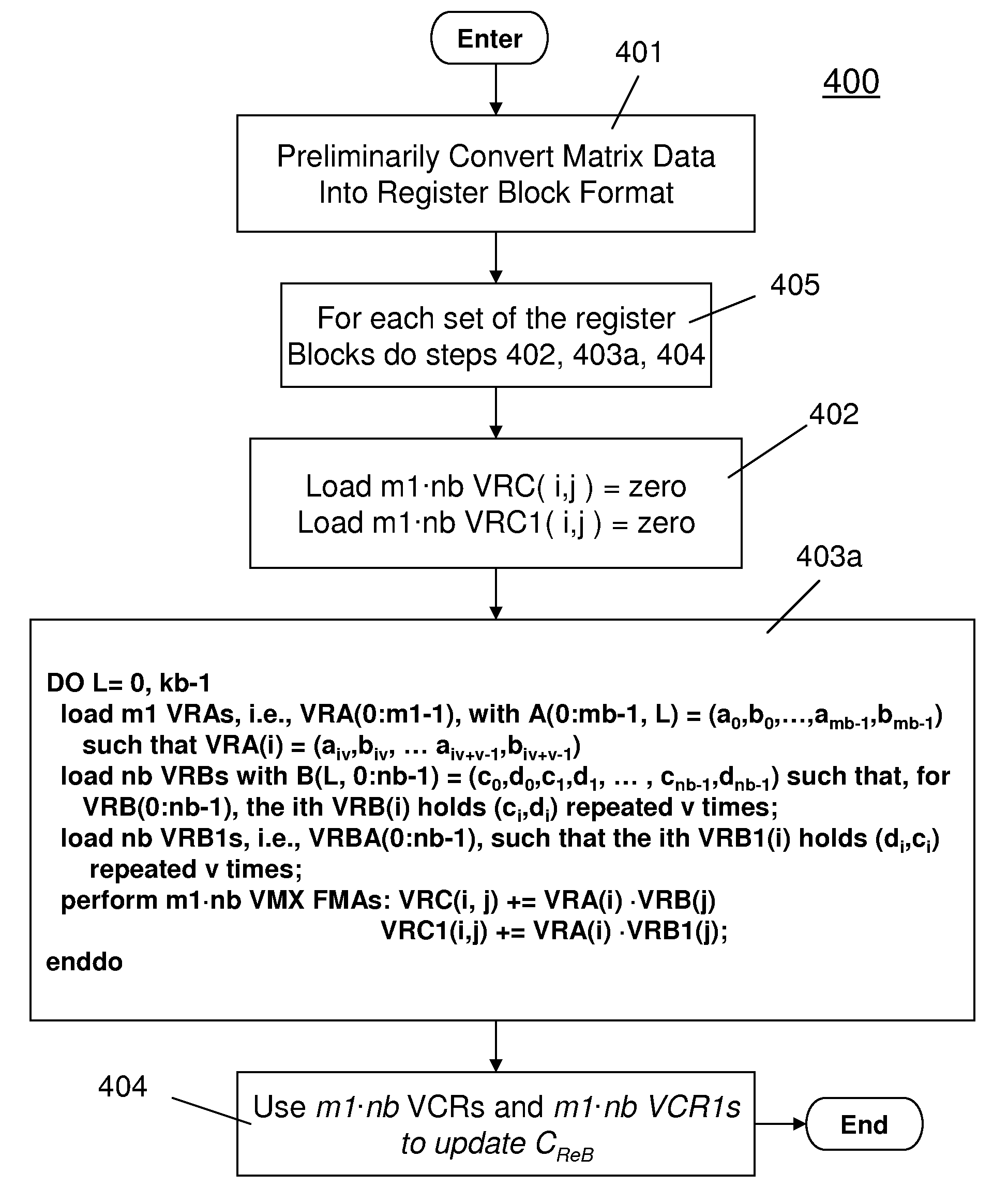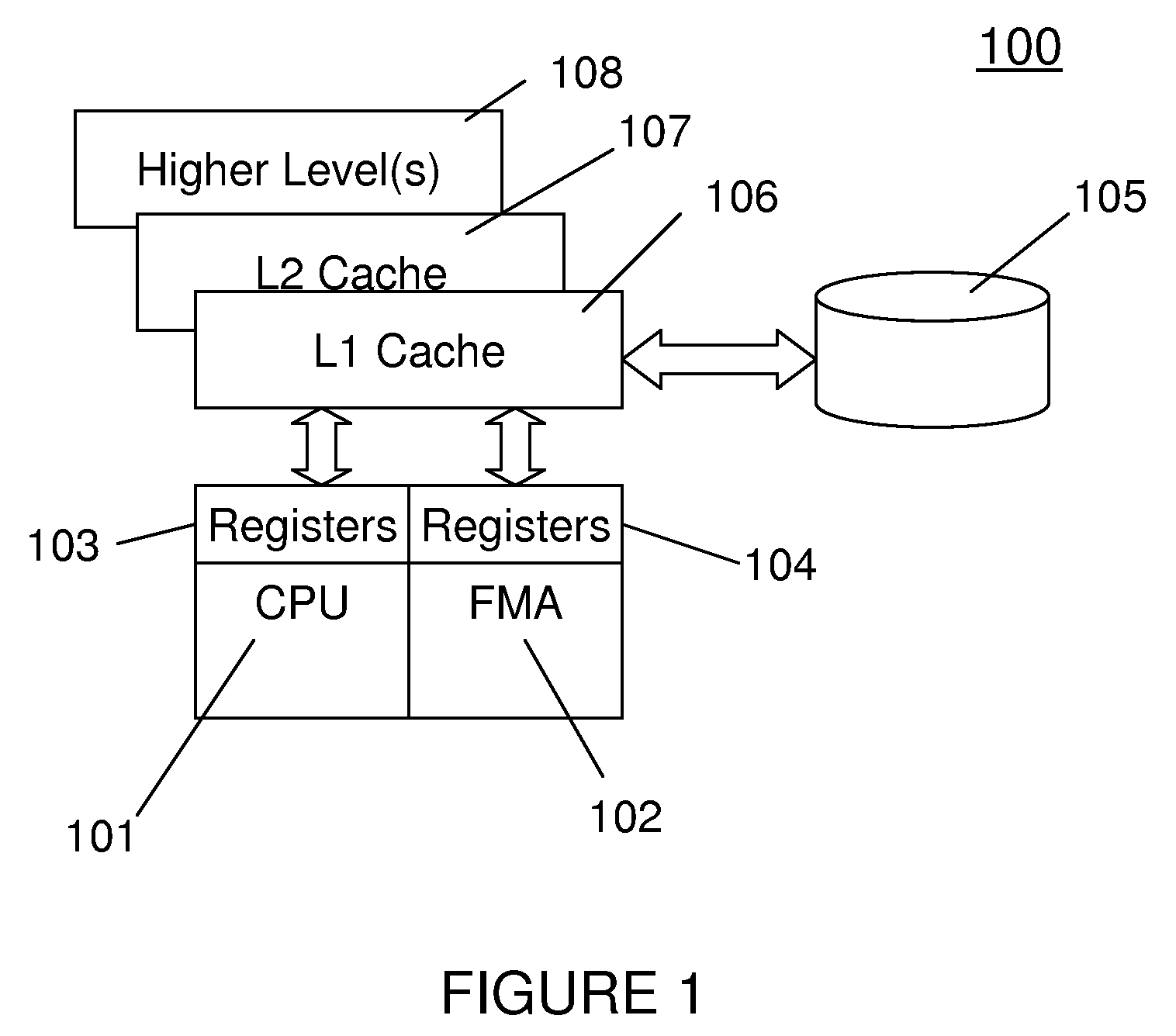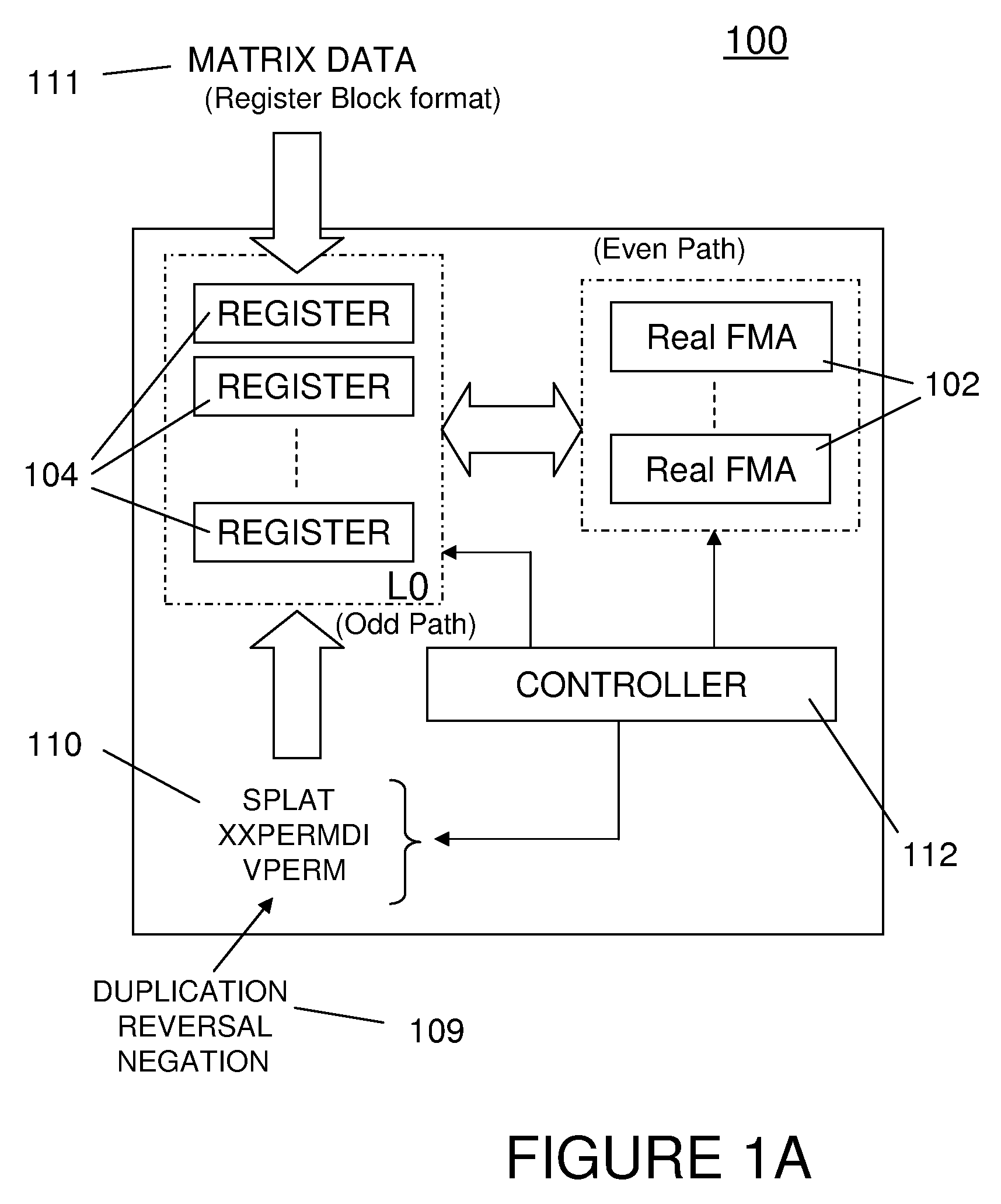Method and structure of using simd vector architectures to implement matrix multiplication
a vector architecture and matrix multiplication technology, applied in the field of method and structure of using simd vector architectures to implement matrix multiplication, can solve problems such as less efficient overall
- Summary
- Abstract
- Description
- Claims
- Application Information
AI Technical Summary
Benefits of technology
Problems solved by technology
Method used
Image
Examples
third embodiment
Sub-Problems and Their Solution
[0119]Assume we have complex matrices A, B, and C. Each a(i,j) is a (a,b), b(i,j) is a (c,d) and c(i,j) is a (e,f). Matrices A and C are in column major format and B is in row major format. This means that transpose matrix BT is in column major format. A is mb by kb, B is nb by kb and C is mb by nb. The computation is ZGEMM: C+=A*B′ where prime is transpose. As in all embodiments except for real_GEMM, let vL be the vector length, v=vL / 2, m1*v=mb, n1*v=nb.
Problem 1.
[0120]We need to form a real matrix Br whose (i,j) elements are c+d. A row of Br consists of n1 / 2 vectors. To get it, we need n1 vectors of B. Let us consider two vectors of B holding vL pairs (c,d). We need one vector of vL (c+d)'s. This is a contraction operation with a simple add. Let vL=4. Two vector loads gives (c0,d0,c1,d1) and (c2,d2,c3,d3). Then two selects gives (c0,c1,c2,c3) and (d0,d1,d2,d3) and one add gives the result (c0+d0,c1+d1,c2+d2,c3+d3). This solution takes five vector op...
first embodiment
Details of the First Embodiment
[0236]As a summary of the present invention, FIG. 3 shows exemplarily a flowchart 300 of the method of a first exemplary embodiment of the present invention, given matrix operands A, B, C.
[0237]There are two cases to be discussed hereinafter. The first case involving strict VMX, along with the second case involving non-strict VMX, are mentioned together. The non-strict VMX case uses the VMX load type instructions (1-4) described earlier.
[0238]In ways (1) and (2) duplicate dual FMAs are set up, typically as at least two pipelines being simultaneously fired and synchronized. Each dual FMA comprises a conventional FMA that executes the operation c=c+ab, where a, b, c are real scalars. The term duplicate dual FMAs means that there are two FMAs needed to form half of a complex FMA, so that one dual FMA handles the computations of the real component and the other dual FMA handles the computations of the imaginary component.
[0239]The first dual FMA is done by...
second exemplary embodiment
[0252]An embodiment of ways (3) and (4) is almost identical to ways (1) and (2). The major difference between these two ways and ways (1-2) is how the m1*nb VRC's and VRC1's vector registers will get their data from vector registers VRA and VRB. FIG. 4 details the second embodiment. It is similar to FIG. 3. FIG. 4 covers ways (3 and 4).
[0253]Consider way (4). Given v pairs (a,b) in a vector register, we want to form v pairs of (a,a) in VRA and v pairs of (b,b) in VRA1 whereas in way (2) we formed form v pairs of (a,b) in VRA and v pairs of (b,a) in VRA1. Way (4) places v products (ac, ad) in VRC and v products (bc,bd) in VRC1. In terms of non-strict VMX we need to form from VR both VRA and VRA1 in the VMX register file. A way to do this is given in load (4) mentioned earlier. Otherwise, for strict VMX we would need to double the size of AReB in order to directly load VRA and VRA1 from AReB. Box 403b for way (4) only differs from Box 303b for way (2) for what is loaded into VRA and V...
PUM
 Login to View More
Login to View More Abstract
Description
Claims
Application Information
 Login to View More
Login to View More - R&D
- Intellectual Property
- Life Sciences
- Materials
- Tech Scout
- Unparalleled Data Quality
- Higher Quality Content
- 60% Fewer Hallucinations
Browse by: Latest US Patents, China's latest patents, Technical Efficacy Thesaurus, Application Domain, Technology Topic, Popular Technical Reports.
© 2025 PatSnap. All rights reserved.Legal|Privacy policy|Modern Slavery Act Transparency Statement|Sitemap|About US| Contact US: help@patsnap.com



